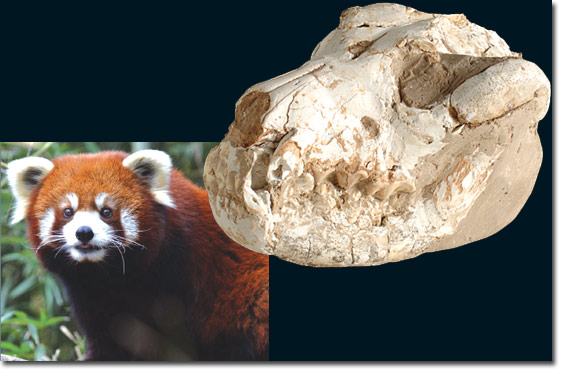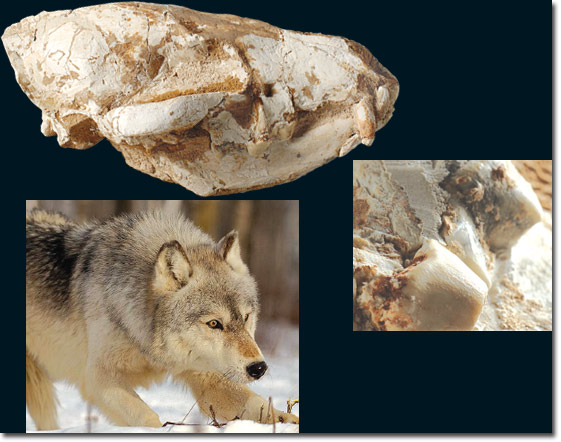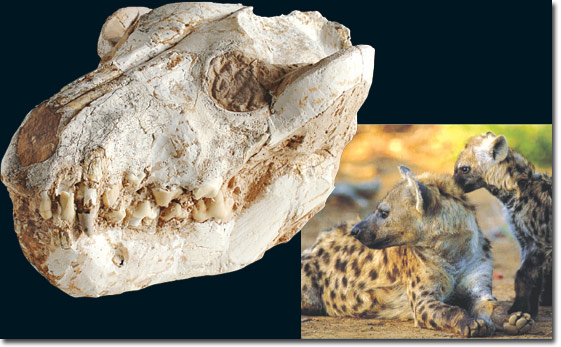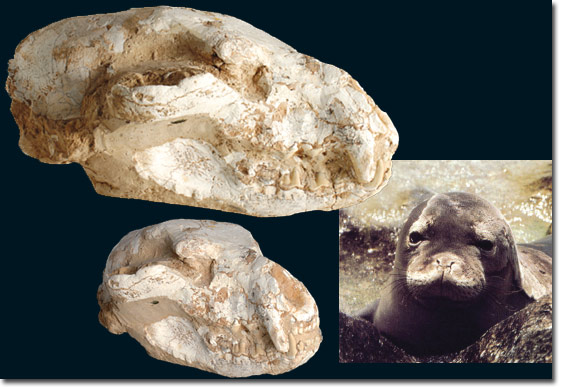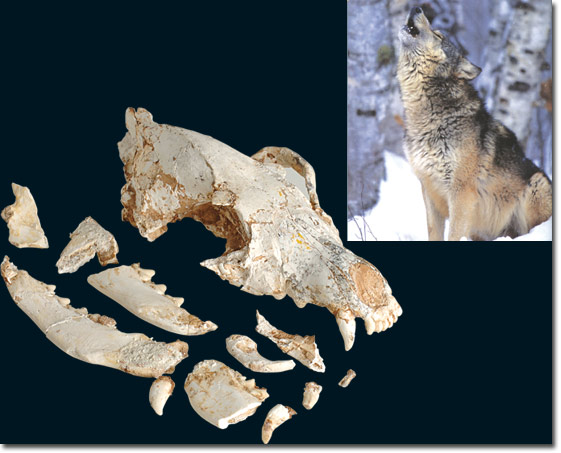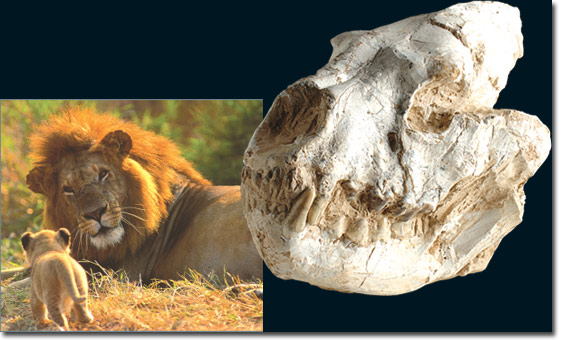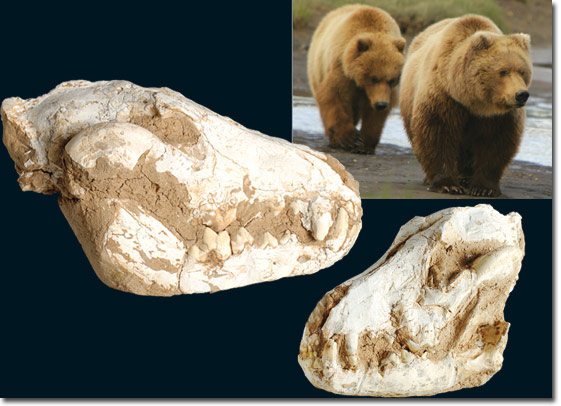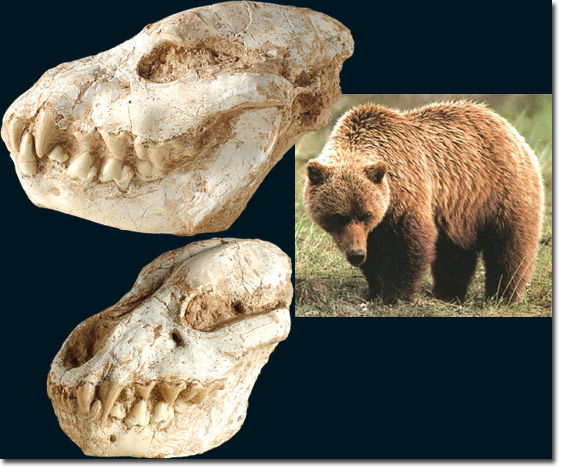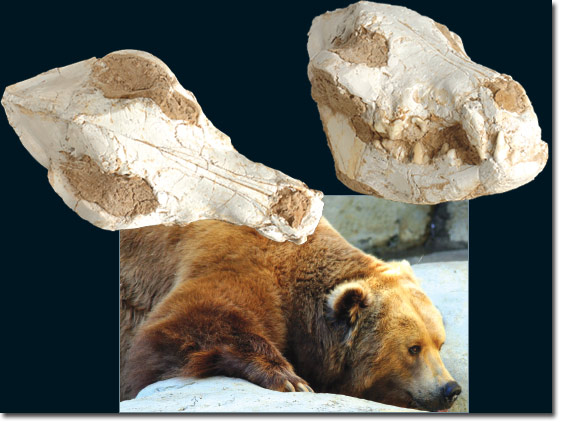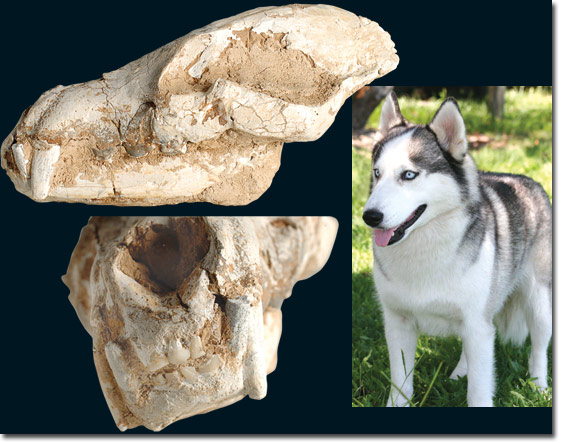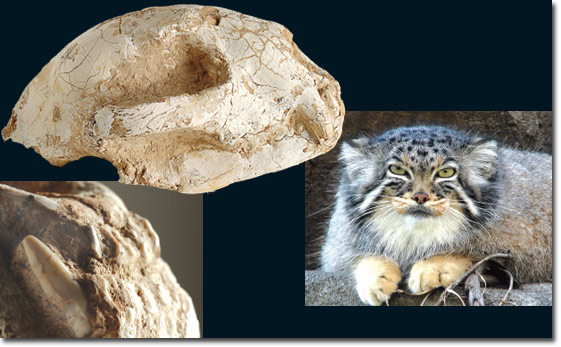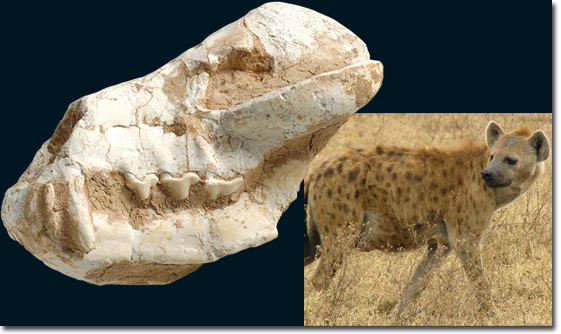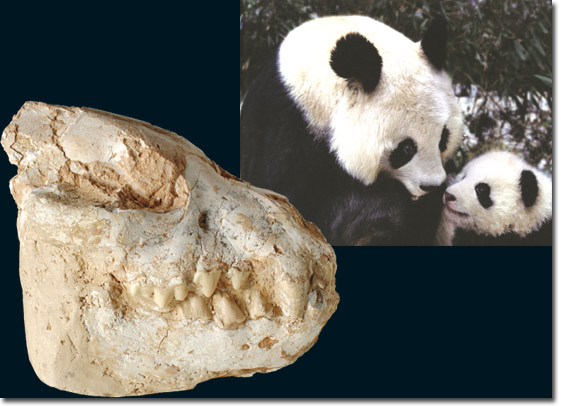Some Specimens Of Fossil Skulls -8-
RED PANDA SKULL
Age: 67 million years As revealed by the paleontological findings, red pandas have never changed. Neither have bears. Nor tigers, nor wolves, nor fish, reptiles, birds or insects. All the fossils discovered to date show that living species have not changed, so there is no scientific meaning in claiming that apes changed in such a way as to turn into human beings. If apes did change, then red pandas should also have one day decided to walk on two legs, to develop their brains and expand their skull volumes, and to develop their hands and feet appropriately. Yet neither red pandas nor apes have ever undergone such a process of change. They never evolved. |
WOLF SKULL
Age: 73 million years The details of the teeth of this fossil are perfectly clear. All living things—both those in existence today and those dating back millions of years that we encounter in the fossil record—have flawless, regular and symmetrical skulls that exhibit no sign of any deformities. Yet evolutionists claim that any species would have to go through a great many imperfect stages before arriving at a flawless skull. There should be a great many more asymmetrical forms, for instance, before perfect symmetry is achieved. There should have been millions of imperfect skulls with a jaw pointing to the right of left, with a nose close to the right cheek, or one eye socket above the other. Yet no such mutant life forms appear in the fossil record. All have skulls that are just as regular and symmetrical as their descendants in existence today. |
HYENA SKULL
Age: 82 million years Allah has created living things with very different, complex features. Mammals, with their highly equipped body systems, exhibit this complexity. There exists not one single finding to indicate that mammals’ characteristic features emerged by way of a supposed process of evolution. On the contrary, countless fossils demonstrate that living things have never changed, and never underwent any evolutionary process. It is highly illogical to seek to postulate a separate evolutionary scenario for human beings, given the obvious stasis in all other life forms. Semi-ape creatures that tried to communicate through grunts, that were totally covered in hair and gradually turned into human beings—these exist only in Darwinists’ imaginations. Human beings have always existed as humans and have always lived with the intelligence and conscience inspired in them by Allah. |
CARIBBEAN MONK SEAL SKULL
Age: 36 million years With the last specimen recorded in Jamaica in 1952, the Caribbean monk seal survived unchanged from 36 million years ago right up to the mid-1900s. The features unique to this species—rather smaller than other species of seal, can be seen in full detail in the fossilized skull, literally identical to members of the same species living up until 60 years ago. Faced with the incontrovertible fact that this life form never altered at all over the course of 36 million years, Darwinism is in a state of terrible and insuperable collapse. |
WOLF SKULL
Age: 72 million years Darwinists have been unable to provide any evidence to show that wolves evolved. Evolutionist publications see that they refer solely to hypotheses and conjectures. You will never find any concrete evidence showing the wolf’s supposed ancestor or by what stages the wolf evolved until attaining its present form. On the other hand, countless fossil specimens make it obvious that wolves have always existed as wolves and have never evolved in any way. The 72-million-year-old wolf skull pictured is one such fossil. |
BLACK BEAR SKULL
Age: 55 million years Darwin invented unbelievable scenarios regarding the illusory development of living things, but found it no easy task to account for ocean-dwelling mammals like the whale. This life form could not be located anywhere on the imaginary tree of life that Darwin imagined. For that reason, he put forward another unbelievable theory, suggesting that whales were descended from bears that had used to hunt along the sea shore. This claim—a source of embarrassment even for Darwin’s own supporters—was logically bankrupt. Present-day bears and fossils of bears dating back millions of years have done away with this claim of Darwin’s. The two look exactly the same. Bears 55 million years ago had no arms beginning to turn into fins or legs developing into flukes. Bears have remained completely unchanged for millions of years. |
LION SKULL
Age: 65 million years So irrefutable is the fossil record and so definitive the remains now in our possession that it is possible to determine all of a fossilized lion’s features, its age and how it lived. Indeed, all the details in the skull illustrated can be seen clearly and it is simple for paleontologists to declare that there is no difference between this specimen and its counterparts today. This fossil reveals that lions have remained unaltered for 65 million years. Lions alive today are exactly the same when they were first created. Contrary to what Darwinists claim, they never evolved in any way, and the fossil record proves this. |
BROWN BEAR SKULL
Age: 8.9 million years The variety of life created by Allah is so glorious that it can be appreciated everywhere in the world. A single species will have countless sub-species, all with their own unique attributes. Examples of nearly all these forms, with all their features, are present in the fossil record. There are no intermediate forms of the kind evolution suggests must have existed, no semi-developed species that ever emerged, and there is no sign of the “common ancestor” that various species are claimed to be descended from. Yet species and even their sub-species manifest themselves in the most perfect states, identical to present-day life forms, in the fossil record. One such example is this flawless fossil skull of a brown bear, which dates back 8.9 million years—proof that this life form never changed, and never underwent evolution. |
GRIZZLY BEAR SKULL
Age: 7.5 million years Like millions of other life forms such as tigers, wolves, foxes, rhinoceroses, pandas, leopards, lions and hyenas, bears have remained exactly the same for tens of millions of years, since the moment of their first Creation. That refutes the claim that living things evolve. The stasis that applies to all living species also applies to humans. In the same way that no change ever took place in the skulls of tens of thousands of species over millions of years, so there has been no evolutionary change in the human skull. In the same way that fish have always existed as fish, birds have always existed as birds and reptiles have always existed as reptiles, so humans have always been humans. There is no question of any direct progression from the primitive to the advanced, of the kind maintained by evolutionists, in any organ or structure of any living thing. The 7.5-million-year-old grizzly bear skull pictured here is one proof of this. |
BROWN BEAR SKULL
Age: 8.9 million years
In his 1991 book Beyond Natural Selection, the American paleontologist R. Wesson describes the information provided by the fossil record regarding the origin of life: The gaps in the record are real, however. The absence of a record of any important branching is quite phenomenal. Species are usually static, ... for long periods, ... genera never show evolution...23Darwinist propaganda, indoctrination and myth are all made meaningless by this fact, demonstrated by countless proofs. Like the 8.9-million-year-old brown bear skull pictured, all fossils show that evolution is a hollow theory. |
SIBERIAN WOLF SKULL
Age: 42 million years If Darwinists are to verify the tales they have been relating for the last 150 years, they must be able to point to the supposed evolutionary traces that the Siberian wolf, for example, underwent before assuming its present form. They have to be able to explain, with full supporting evidence, how Siberian wolves acquired their eyes, teeth and noses, and how their skull structures assumed their present-day shapes. In addition, they must do that for all other living things. Yet Darwinists can never provide such a scientific account for Siberian wolves or for any other life form. All they can offer is fictitious chronologies, hypothetical illustrations and reconstructions that fail to reflect the truth. |
STEPPE POLECAT SKULL
Age: 73 million years The close-up shows the fossil’s jaw and dental structure. The steppe polecat, approximately the same size as the domestic cat, is a member of the cat family. The features visible in this 73-million-year-old skull reveal that present-day steppe polecats have never changed over tens of millions of years. It is impossible to find a single piece of evidence showing that the creature ever evolved. Steppe polecats are of the countless species that never underwent evolution. |
HYENA SKULL
Age: 42 million years The fossil history of the hyena goes back to very ancient times. None of the fossils discovered so far is any different from present-day hyenas. In order to verify its claims, the theory of evolution must point to at least one concrete piece of evidence—an intermediate form, showing that these present life forms are descended from other, earlier ones. But that is totally impossible. The evidence revealed by paleontology consists of fossils of living things that have never changed and thus constitute significant proof against the theory of evolution. The 42-million-year-old hyena fossil illustrated is one of the proofs that demolish that theory and shows that hyenas have never altered in any way. |
PANDA SKULL
Age: 73 million years Darwinists describe science as chance. They believe that chance works miracles and attempt to account for the perfections they encounter, the sublime life forms and grandiose civilizations, in terms of coincidence. They try to brand any other alternative explanations as unscientific. That is why they produce chance-based developmental chronologies and look in the fossil record for evidence to support them. Yet the way this desperate logic has been portrayed as “scientific” is the disgrace of the century. As with the 73-million-year-old panda skull pictured here, the science of paleontology reveals examples of living things that have never changed. |
FOOTNOTES
23. R. Wesson, Beyond Natural Selection, MIT Press, Cambridge, MA, 1991, s. 45
- Introduction
- The ımpact of fossil skulls on Darwinism
- Some specimens of fossil skulls -1
- Some specimens of fossil skulls -2
- Some specimens of fossil skulls -3
- Some specimens of fossil skulls -4
- Some specimens of fossil skulls -5
- Some specimens of fossil skulls -6
- Some specimens of fossil skulls -7
- Some specimens of fossil skulls -8
- Some specimens of fossil skulls -9
- Some specimens of fossil skulls -10
- Some specimens of fossil skulls -11
- Conclusion

